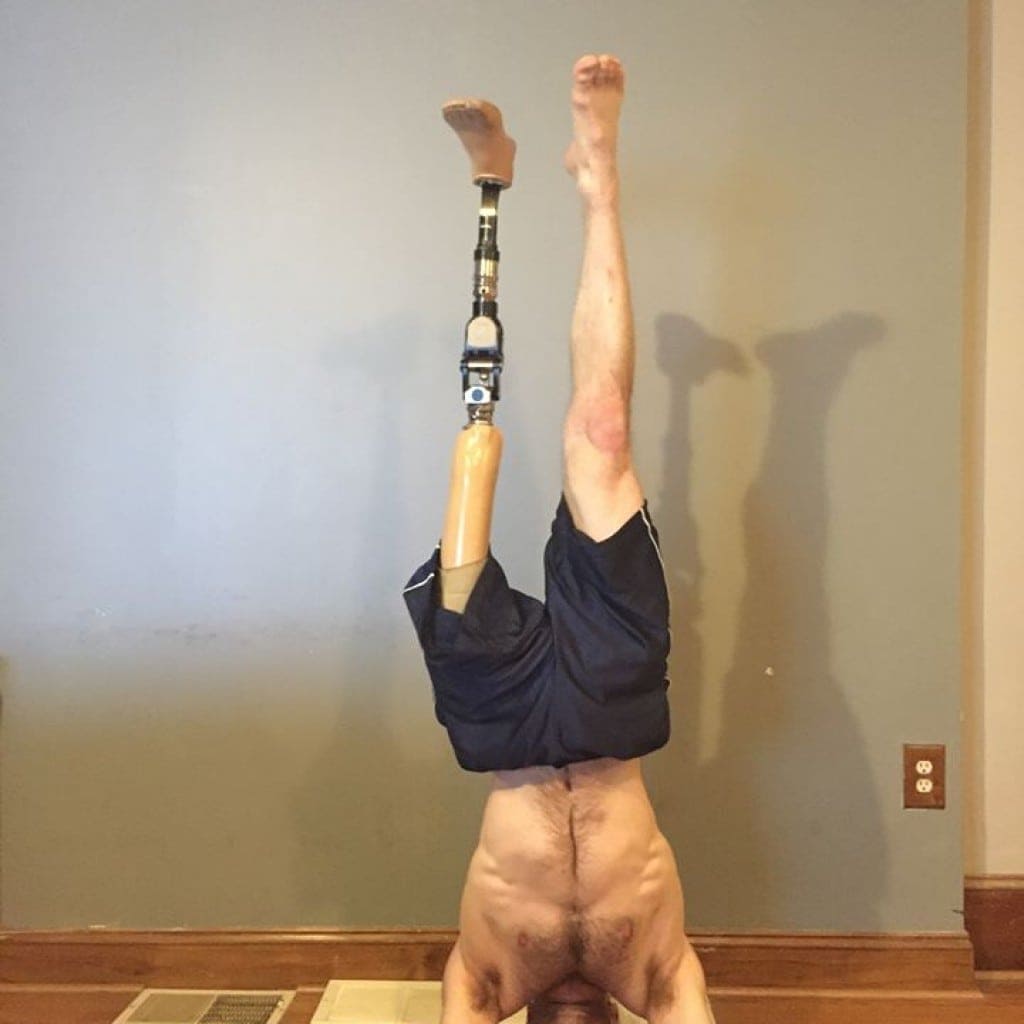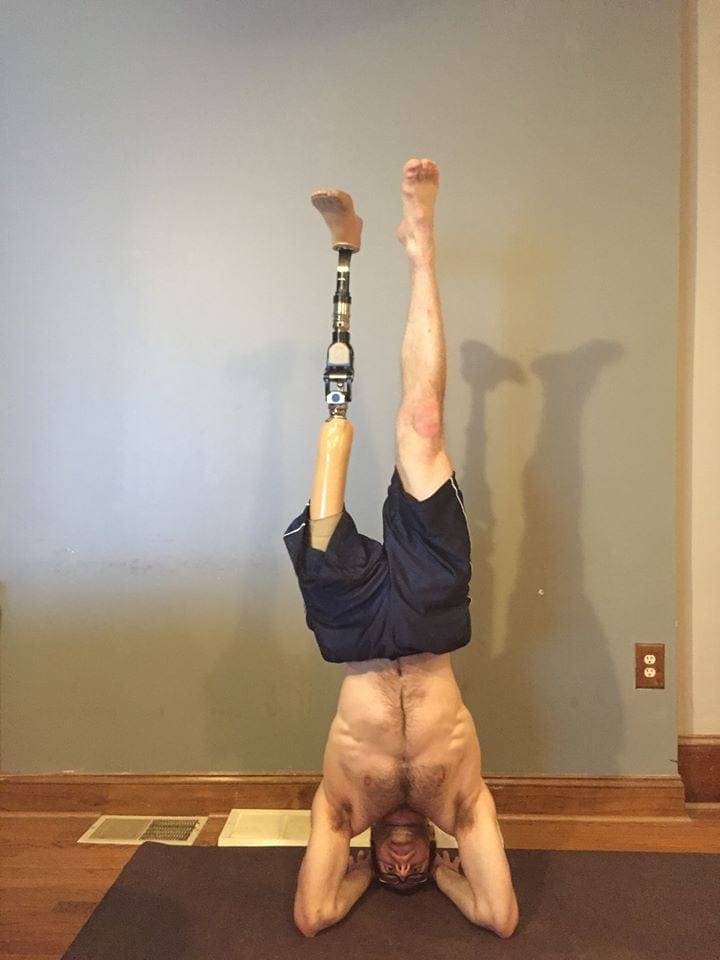5 Ways to Bulletproof Your Joints for Heavy Lifting
By Travis Pollen
Lifting weights has a laundry list of health benefits, including increased bone density, lean body mass, and metabolic rate, just to name a few. But it can also take a serious toll on your joints if you aren’t careful. Here are five easy ways to “bulletproof” your joints when lifting heavy.
(Note: Included are links to over a dozen short YouTube videos. Fear not – they’re only about 10 seconds long each, and if you’re already familiar with the exercise, then feel free to skip to the video.)
1. Follow the “joint-by-joint approach.”
Popularized by physical therapist Gray Cook and strength coach Mike Boyle, the joint-by-joint approach is a simple yet remarkable theory about the human body. It states that our joints have alternating needs for mobility (ability to actively move a joint through a full range of motion) and stability (ability to resist unwanted motion).
From the ground up:
- The ankles require mobility
- The knees require stability
- The hips require mobility
- The lumbar spine (low back) requires stability
- The thoracic spine (upper back) requires mobility
- The scapulae (shoulder blades) require stability
- The gleno-humeral joints (shoulders) require mobility
Cook and Boyle reason that if one joint is out of whack, then the joints above and below it will be forced to take up the slack. For instance, if the hips are immobile, then the low back and knees end up filling in when the body needs range of motion that the hips can’t provide. This extra demand on the low back and knees can cause pain and injury both chronically and acutely.
One easy implementation of the joint-by-joint approach is in warm-up. Simply mobilize the joints that require mobility, and do a stability drill for the joints that require that.
Here’s a sample warm-up:
- Wall ankle mobilization (ankle mobility) – https://www.youtube.com/watch?v=AXbLwTVstDw
- Side-lying 90-90 arm sweep (thoracic mobility) – https://www.youtube.com/watch?v=INmt9tLui18
- Side planks (lumbar stability)
- Hand-release push-ups (scapula stability) – https://www.youtube.com/watch?v=Bq4m-yIHuOI
- “Naked” (unloaded) Turkish get-ups (shoulder and hip mobility) – https://www.youtube.com/watch?v=AZNPpVDV9RY
- 3D split squat matrix (knee stability) – https://www.youtube.com/watch?v=qvZfBHO3exo
2. Activate “dormant” muscles at the end of warm-up or in between sets.
Due to the typical desk jockey lifestyle, some muscles have a tendency to “get sleepy.” That is, from sitting slumped over at a desk all day, muscles like the glutes, lower traps, and rear delts often fail to activate to their fullest potential when called upon during a workout.
As a result, other muscles like the hamstrings, spinal erectors, and upper traps are forced to take over to make up for the deficiency. The extra stress placed on the compensating muscles can result in strength imbalances and poor posture, putting the joints in suboptimal alignment and possibly even resulting in injury.
To get the muscles you intend to work firing properly – and avoid over-stressing the ones you don’t – tack on a few low-load “activation” exercises to your warm-up, or incorporate them in between sets of strength work.
Examples of these types of exercises include
- Bent-over lower trap raises (for overhead pressing) – https://www.youtube.com/watch?v=UDKMbMvrOp0
- Side-lying clamshells (for hip abductor activation while squatting) – https://www.youtube.com/watch?v=XKNnHoiOZUQ
- Glute bridging (for glute activation while deadlifting) – https://www.youtube.com/watch?v=kPmcgRnJdnU
- Band pull-aparts (for rear delt activation to counterbalance bench pressing) – https://www.youtube.com/watch?v=8FKzFm_Y9pw
3. Ensure your movement is perfect before adding load — and that the addition of load doesn’t change the movement.
Bro squats. We’ve all seen them. A small group of naïve bro’s huddled around the squat rack watching on as their ringleader demonstrates crummy squats. They proceed, one-by-one, to imitate the heels-off-the-ground, knees-caving-in quarter squats that their friend showed them – all with about two plates too many on either end of the bar. Then high fives and butt slaps all around.
Lo and behold, it’s never the same group of unfortunate souls from week to week, as chances are they had too much knee pain after the first session to come back for more torture.
So what went wrong?
The kids were too busy stroking their egos to pay attention to their movement quality. Had they stripped a few plates off and focused on driving from their heels, keeping their knees in line, and going to depth, they might have actually felt their hamstrings, quads, and glutes working, instead of just their knee joints and egos.
Before adding load to any movement, always be sure that you can assume the proper position first. That means starting with bodyweight alone, and ensuring adequate mobility and stability to maintain perfect position throughout the full range of motion required.
Here are a few prerequisite drills you can use in preparation for the big lifts:
- Wall-facing squats (prior to barbell squats to ensure an upright torso) – https://www.youtube.com/watch?v=yGfOxoIf8a8
- Scapular wall slides (prior to overhead pressing to ensure adequate shoulder mobility without compensation at the low back) – https://www.youtube.com/watch?v=Xnn5FZH2ENY
- Dowel rod hip hinge (prior to deadlift or kettlebell swings to ensure a flat back) – https://www.youtube.com/watch?v=lsk9f9os4zg
- Chest-to-desk push-ups (prior to bench pressing to ensure adequate shoulder range of motion and core stability)
Once you’ve locked in your technique with just bodyweight, feel free to add weight progressively. If the added weight changes the way you move, though, dial it back until you’re perfect again.
4. Choose the variations of lifts that work best for you, not the ones that everyone says are the best.
Just because a fitness magazine with a bunch of jacked dudes on the cover says everyone has to back squat and barbell deadlift for big legs, that doesn’t mean it’s true for you. In fact, an exercise that your body isn’t well suited for can actually do more harm than good by putting stress on joints that aren’t properly aligned.
Take the back squat, for instance. Not every lifter is capable of performing a good one. Due to the lengths of their femurs, tall guys in particular tend to struggle. Present and former “overhead athletes” (like baseball players) also often have trouble due to their limited ability to externally rotate and hold onto the bar. Give these guys a weight to hold “goblet-style,” though, and they have no problem getting down into a solid squat.
Training isn’t one-size-fits-all. To meet your own individual needs for joint-friendly exercises, you must modify, substitute, and eliminate as needed. If an exercise causes pain, doesn’t look right, or seems to be hitting you in all the wrong places, don’t do it! Instead, use a different variation or simply drop it from your routine altogether for the time being.
Here are a few easy substitutions for common issues:
- Kettlebell or dumbbell goblets squats (to correct for excessive forward lean of the torso) – https://www.youtube.com/watch?v=zNoddoGu70Y
- Barbell rack pulls (to correct for round-back deadlifting from the floor) – https://www.youtube.com/watch?v=5-e4PgWp1RQ
- Neutral grip dumbbell floor press (for a more comfortable shoulder position than barbell bench pressing) – https://www.youtube.com/watch?v=21lacR1KLnY
- Dumbell lateral raises (to limit the range of motion that may result in shoulder impingement when overhead pressing) – https://www.youtube.com/watch?v=771O3o4oD4U
5. Stick to moderate training volume.
High-volume training and cheat reps are great tools – for advanced bodybuilders, that is. But for the average Joe, who’s just looking to put on some muscle and drop some fat, protocols like 10 sets of 10 reps of bench press simply aren’t necessary. Unless, of course, your goal is to get sore elbows and be unable to train again for a week, in which case go for it!
The focus should instead be on moderate training volume, with sets taken to form failure and never beyond. When going heavy, keep the total number of reps to about 25 (i.e. 5 x 5, 6 x 4, 8 x 3). When training with moderate weights, limit volume to around 50 reps (i.e. 3 x 15, 4 x 12, 5 x 10).
Joint-Friendly Finish
The occasional lifelong lifter out there will tell you that arthritis is a forgone conclusion if you’re in the iron game long enough. Don’t believe the hype. Follow my five recommendations, do plenty of Man Flow Yoga, and you’ll live a long, happy, and joint pain-free life both in the gym and out.
Author Bio
Travis Pollen is an NPTI certified personal trainer and American record-holding Paralympic swimmer. He is currently pursuing his Master’s degree in Biomechanics and Movement Science at the University of Delaware. He maintains a fitness blog and posts videos of his “feats of strength” on his website, www.fitnesspollenator.com. Be sure to like him on Facebook at www.facebook.com/fitnesspollenator.


The older we get, the easier we get injured, and the longer it takes to recover. We can avoid injury but still get results by using perfect form, moving much more slowly through the range of motion and using lighter weights. Muscle strength and growth is a function of how much stress is on the muscle for how long. Using lighter weights and going much more slowly provides the same stress as using heavier weights and going faster. Unfortunately this information doesn’t tend to get past the gym ego.